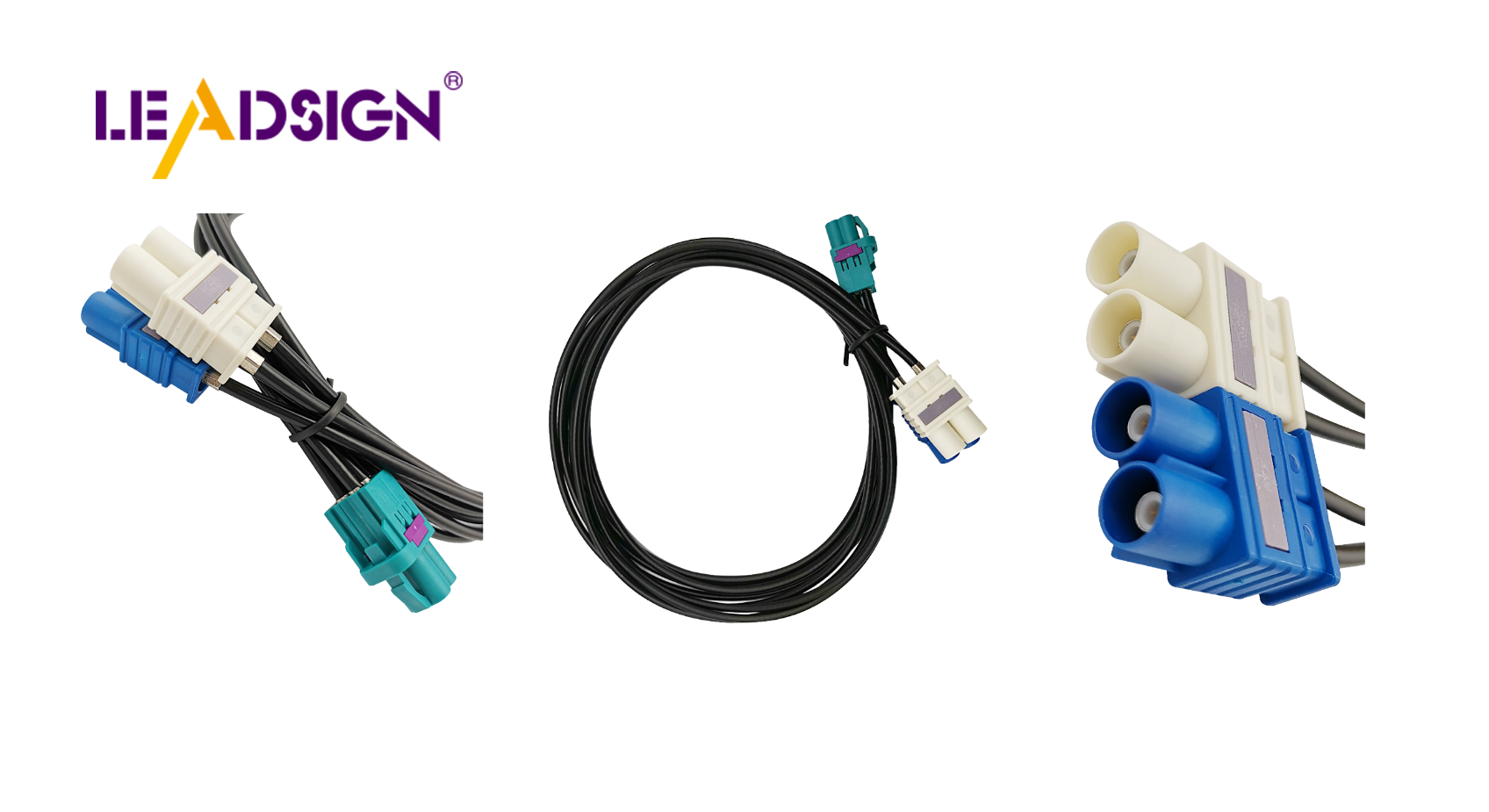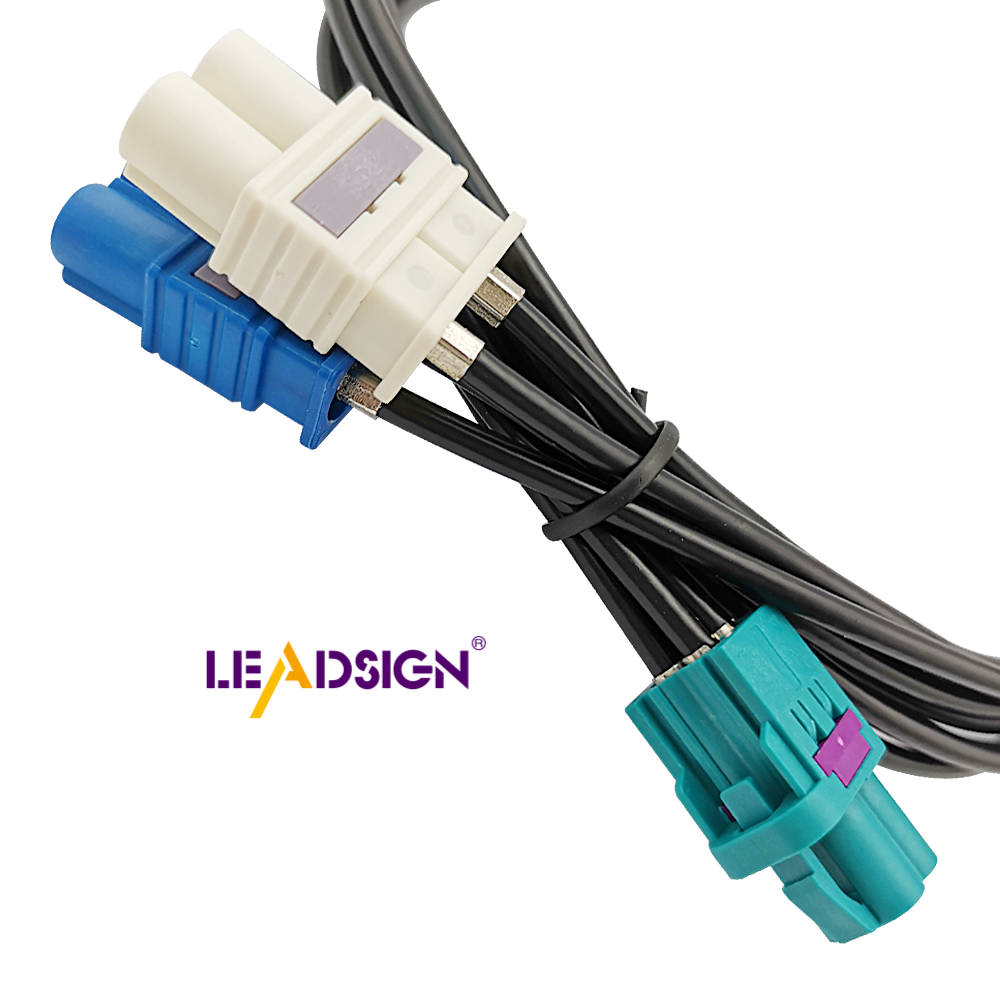Finding the Perfect 50 Ohm Coax Cable for Your Application

Choosing the right 50 ohm coax cable types is crucial. Making the wrong selection can lead to signal loss or damage to your equipment. Signal loss, known as attenuation, occurs as signals travel through cables. Longer cables tend to lose more signal, so it's advisable to keep them as short as possible. Quality cable ends are essential for optimal network performance. Loose connections or damaged covers can negatively impact signals. When selecting from various 50 ohm coax cable types, consider both the length and the connectors to achieve the best results.
Understanding 50 Ohm Coax Cables
General Uses of 50 Ohm Coax Cables
You see 50 Ohm coax cables in radios and Wi-Fi. They help send signals in devices like antennas. These cables handle high power well and lose little energy. This makes them great for radio frequency (RF) tasks.
Besides RF, these cables work in telecom and TV broadcasting. They send signals far without losing strength. You can use them at home or for big networks. 50 Ohm coax cables are dependable for any setup.
Importance of Impedance in Coax Cables
Impedance is key to how coax cables work. It shows how much they resist electric flow, measured in Ohms. For 50 Ohm coax cables, impedance helps transfer power well and stops signal bounce back. Matching cable impedance with your system avoids signal loss.
Scientific Research Findings: The Data Alliance Blog says a cable's makeup sets its impedance. Balancing resistance, capacitance, and inductance keeps RF circuits working well.
Knowing impedance helps pick the right cable. Wrong impedance can ruin signal quality or harm devices. Make sure cable impedance fits your gear for best results.
Important Things to Think About
Impedance and Its Job
When picking a coaxial cable, think about impedance. Impedance shows how much a cable stops electricity. It's important for good power transfer. 50 Ohm coaxial cables work well for strong power uses like routers. They keep signals from bouncing back and work great. Matching the cable's impedance with your system stops signal loss and damage. Always check that the cable's impedance fits your device needs.
Frequency Range and Fit
Frequency range is also key. Different cables handle different frequencies, which matters for their use. For example, RG6 coaxial cables are made for high-frequency jobs like internet TV. But, RG-59 works better for low-frequency things like CCTV cameras. Pick a cable that matches your equipment's frequency needs to make sure it works well. The right match between the cable and devices means good signal flow.
Power Handling Skills
Power handling skills show how much power a cable can take without problems. RG-213 coaxial cables are great in high-power places, taking over 1000 watts easily. This makes them good where strong power is needed. Also, 50 Ohm coaxial cables are known for high voltage use, making them reliable in big setups. Look at your power needs and pick a cable that can handle it without losing signal quality.
Environmental Conditions and Durability
Think about where you'll use the coaxial cable. Different places can change how well it works and how long it lasts. If you need a cable outside, pick one that handles bad weather like rain or snow. RG-213 coaxial cable is tough and good for outdoor use.
Weather Resistance: Outdoor cables should block water and sun rays. This stops damage and keeps them working well. Find cables with covers that protect from weather.
Temperature Tolerance: Some cables work better in hot or cold places. If your job has high heat or cold, get a cable made for those temperatures. This helps the cable stay strong.
Physical Durability: Cables in rough spots need to be strong. They should not break easily from being pulled or bent. 50 Ohm coaxial cables are used in big jobs because they are strong.
Flexibility: Sometimes, you want a bendy cable that's easy to put in place. RG-59 coaxial cables bend easily, so they're good inside when you don't need long runs.
Tip: Match the cable's toughness with where you'll use it. This makes sure it works best and lasts longer.
By thinking about these things, you can pick a coaxial cable that fits your needs and stands up to tough conditions.
Comparing Different Types of 50 Ohm Coax Cables

RG-58 vs. RG-213
RG-58 and RG-213 are different in use and features. RG-58 is thin, so it's bendy and easy to move. It's good for short distances where bending matters, like radios or small networks. But, it loses more signal if used long.
RG-213, however, is thick and strong. It works well for high power and long distances with less signal loss. Its toughness makes it great for outdoor places where cables might get pulled or bent. For tough spots, choose RG-213.
LMR-400 vs. LMR-600
Both LMR-400 and LMR-600 are used for high-frequency jobs but differ in needs. LMR-400 balances bending with working well. It's used in wireless things like Wi-Fi where medium distance is okay.
On the other hand, LMR-600 is thicker for even less signal loss far away. It's best when keeping signals strong really matters, like big networks or far antennas. If you need very little signal drop, pick LMR-600.
Specialty Cables for Unique Applications
Sometimes regular cables aren't enough; special ones help unique tasks. These have features to solve certain problems like blocking electric noise with extra shields.
In cars, tiny coaxial cables such as the Mini FAKRA Connector send fast data while saving space. They're key in new cars for smart driving systems or entertainment setups. When picking a special cable, think about what your job needs to work best.
50 ohm coax cable types
When picking a coaxial cable, know the different 50 ohm coax cable kinds. Each kind is good for certain jobs. Here are some common ones:
RG-58: This cable is thick and not very bendy. It’s great for outside use and clear video signals. It's tough, so it lasts in hard places, but it's hard to bend.
RG-213: Strong and handles lots of power, RG-213 is good for long distances with little signal loss. Its thick build protects well from weather, making it good outside.
LMR-400: This cable balances bending and working well. Used in wireless things like Wi-Fi, it’s easy to set up and doesn’t lose much signal over medium distances.
LMR-600: For less signal loss, pick LMR-600. It’s thicker to keep signals strong far away, perfect for big networks or far antennas.
Mini FAKRA Connector: In cars, saving space matters. The Mini FAKRA Connector sends fast data in small spaces, important for smart car systems.
Specialty Cables: Sometimes regular cables don’t work well enough. Specialty cables have special features like extra shields to stop electric noise where needed.
Tip: Match the cable type with what you need it for. Think about how often you’ll use it and where to get the best results.
By knowing these 50 ohm coax cables, you can choose better cables that make your system work well.
Easy Tips for Setting Up and Taking Care of Cables
How to Install Right
Putting in a 50 Ohm coax cable the right way makes it work best. Follow these easy steps:
Pick Short Cable: Use a short cable to keep signals strong. Long cables can make signals weak.
Use Good Connectors: Choose good connectors for strong links. Bad ones can mess up signals.
Don't Bend Sharply: Bending too much can break the cable and hurt how it works. Use gentle bends to keep it safe.
Hold Cable Tight: Use ties or clips to hold the cable still. This stops it from moving and wearing out.
Keep Safe from Weather: If outside, make sure the cable is weatherproof. Cover it to protect from rain, sun, and heat changes.
Tip: For bending needs, try using LMR-400 cables. They bend easily and last long, perfect for such uses.
Ways to Make Cables Last Longer
Taking care of your coax cable helps it last longer. Try these simple ideas:
Check Often: Look at cables and connectors for damage or wear like cracks or rust.
Clean Connectors: Dust on connectors can hurt performance. Wipe them with a soft cloth sometimes.
Don't Overload Power: Make sure the cable isn't carrying too much power as this can cause harm.
Move if Needed: If signals are bad, check where the cable is placed; moving might help fix issues.
Replace When Worn Out: If a cable is very worn or broken, change it quickly to avoid more problems.
Tip: For outdoor use, think about using RG-213 cables as they are tough against bad weather and last longer.
By following these setup and care tips, your 50 Ohm coax cable will work well and stay good for a long time.
This blog taught you why picking the right 50 Ohm coax cable is important. You learned about different types like RG-58, RG-213, and LMR®400. Each type works best for certain jobs. Think about things like impedance, frequency, and where you'll use it when choosing a cable. For strong power, use RG-213. If you need flexibility in wireless systems, go with LMR®400. Always match the cable to your device needs for best performance. By thinking about these points, you can choose wisely and improve your system's efficiency.
See Also
Harnessing FAKRA Coaxial Cable's Full Potential
Why FAKRA Coaxial Cables Matter in Automotive Use
Maximizing the Benefits of FAKRA Coaxial Connectors

